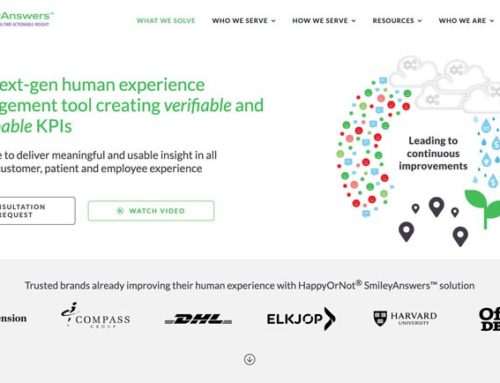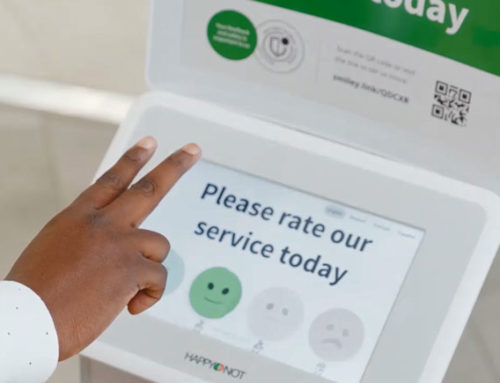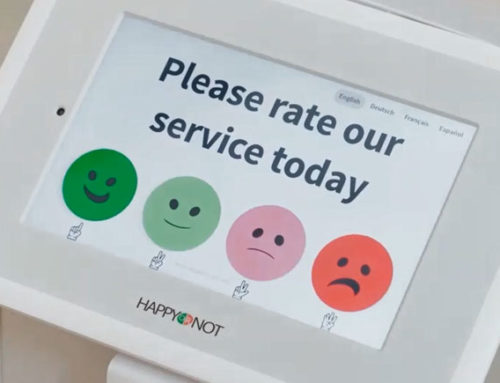Customer Experience Management (CEM) companies like Medallia, Qualtrics, inMoment and Clarabridge offer impressive tools. They aggregate experience signals from across the business, pulling together structured and unstructured, solicited and unsolicited data to create a view of the customer experience. However, these tools are hampered by the availability of real-time, in-the-moment feedback solutions, especially along the physical elements of the journey. This is a meaningful data gap that ultimately impacts the effectiveness of the CEM tool output.
So, why is real-time, in-the-moment data critical to the actionability of the output from these tools?
There are a few reasons:
First, usually only the happiest or angriest customers take the time to fill out a survey, post on social media, call customer service or fill out a post transaction surveys. Think about the times you’ve been asked to complete an experience survey — when were you inclined to take the time to do it. For most, it is only when an employee goes out of their way to make your experience memorable, or when you are so angry you feel the need to vent, and then you vent to friends and family, on surveys and on social media channels to make the biggest impact. The resulting data is therefore skewed towards a specific cross-section of the customer pool – a very small portion of the overall customer base — it does not represent the sentiment of the broader population.
Second, most of the traditional survey solutions (ex: email, receipt request) solicit feedback well post the transaction. Consumers are then impacted by anything that happens between the transaction itself and the time of the survey completion — skewing their remembrance of the experience. For example, if something happens to irritate you in between the transaction and the survey completion, that irritation is reflected in how you respond to the survey, casting an inaccurate shadow over your responses. And when survey incentives are added to the mix (i.e. $10 off your next purchase if you fill out this survey), the quality of the feedback given becomes suspect.
Third, traditional survey solutions do not provide the level of detail that helps front-line employees determine what specific action to take to improve a customer’s experience. Let’s say Janice shopped at XYZ retailer today. She was not able to find many of the things she needed due to out-of-stock (OOS) issues in the store. Janice gets a request for a survey on her register receipt. She is angry and decides to let the store owners know why. In the survey she says that she couldn’t find what she needed and will have to make a trip to another store to finish her shopping. The retailer knows which store she was in, what time she was there, and that she is angry about OOS, but the store is very big and they have no idea which specific categories/products she was unable to find. The resulting action taken is at a higher level (OOS % tracking, vendor order fulfillment requirements) and may or may not trickle down to improve Janice’s in-store experience.
Lastly, CX data and reports tend to be shared first at the highest level of an organization, and sometimes don’t even get shared with the people that actually have the most impact on customer experience. When they do get shared, the data is already weeks to months old. What good are CX insights if they don’t translate to timely, simple, clear, store-specific directions for the front-line employees that are in the best position to take action and improve customers’ experiences.
Companies spend a lot of money and time on CEM tools. Closing the consumer feedback data gap mentioned above, with real-time, in-the-moment, highly actionable insights will improve the overall ROI and actionability of VoC programs and empower employees to provide the best possible customer experiences day-today.
SmileyAnswers is the next-gen CX tool that can quite effectively fill this consumer feedback data gap. Through physical and digital feedback terminals that are placed along the consumer journey, consumers can share their sentiment and experience specifics in real-time. Feedback terminals are easy to use so response rates are significantly higher than traditional survey methods — ensuring that you are hearing from a broad portion of your consumer base. And since the survey questions can be specific to the portion of the customer journey or the part of the store, responses are highly specific and actionable.
Interested in learning more? Contact us.




